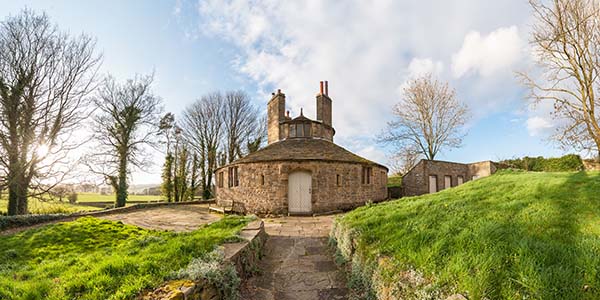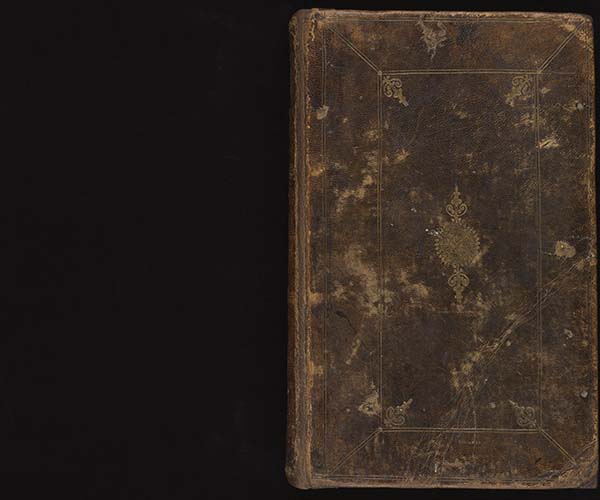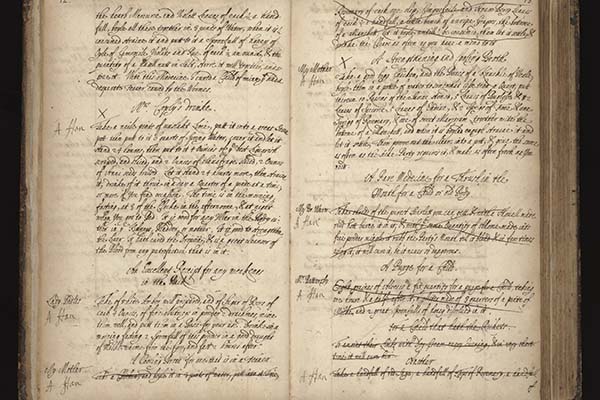One of the Landmark Trust’s most fascinating sites is Beamsley Hospital near Skipton, North Yorkshire. It is a wonderful monument to the efforts of two aristocratic women to provide shelter and sustenance for vulnerable older women in the late 16th and 17th centuries. The almshouse was founded by Margaret Clifford, Countess of Cumberland (1560–1616), in 1593 and completed by her daughter, Lady Anne Clifford (1590–1676). Beamsley provided accommodation for 13 impoverished widows, seven of whom lived in its distinctive circular building. With a chapel at its centre, the building is a testament to the importance of religious worship in early modern English almshouses.

Countess Margaret and Lady Anne responded to a social need that had existed since the Middle Ages. Widows, especially those of advanced years, were often very poor and depended upon charity. In the medieval period these women sometimes joined the permanent staff of hospitals for the sick and poor, caring for the sick in return for food and board. In northern European cities such as Bruges, beguinages were established – large almshouse complexes that enabled unmarried or widowed women to live together and pursue a devout religious life without becoming fully professed nuns.
In England, the support offered by monastic hospitals and almshouses to poor women was severely disrupted by the Reformation in the 16th century. The foundation of Beamsley reflects a pressing concern to provide for this sector of society, but also the broader preoccupation of aristocratic women with matters of charity and bodily care. The Wellcome Library holds a rich collection of manuscript recipe books from 17th-century aristocratic households, which similarly evidence the involvement of high-status women with arrangements concerning sustenance and health.

One of these recipe compilations, MS. 7113, was begun in 1651 by Lady Ann Fanshawe (1625–1680) and continued from March 1678 by her daughter Katherine (1652–c.1708). It contains both culinary and medical recipes, a number of which are ascribed to Ann Fanshawe’s own mother, Margaret Harrison (c.1591–1640). The creation of MS. 7113 evokes the history of the founding of Beamsley Hospital. Much as Beamsley was built by two generations of aristocratic women, this manuscript volume reflects the knowledge and preoccupations of a high-status grandmother, mother and daughter.
Both Beamsley Hospital and Ann Fanshawe’s recipe book were shaped by aristocratic women’s concern with matters of bodily health and wellbeing. While Beamsley provided shelter and sustenance for poor widows, the Fanshawe manuscript contains numerous medicinal as well as culinary recipes. Furthermore, its food-related material was also linked to health, as since the Middle Ages diet had been understood to be a key factor in preventing and treating sickness. At times the two genres of recipes clearly intersect in the manuscript, for example in a recipe for a chicken broth intended to strengthen and cool the sick.

While the Fanshawe family was privileged, it was no stranger to the vulnerabilities of life. Ann Fanshawe gave birth to 24 children, only three of whom survived to become adults. Unsurprisingly, the medicinal recipes reflect anxiety about the health of children, and include ‘A Purge for a Child’, ‘A Glister for a Child that hath Wormes’ and ‘A Rare Medicine for a thrush in the Mouth of a Child or old Body’. Another recipe, ‘To make an exellent [sic] Water gruell for the cleansing of a childbed Woman or one in the like condition’, relates to female reproductive health.
The Fanshawe recipe book sheds light on knowledge and practices that were shared by other English aristocratic households, including no doubt those of Lady Anne Clifford and her mother Margaret. Furthermore, it testifies to the literary pursuits of 17th-century women. Anne Clifford herself compiled diaries, while Ann Fanshawe is best known for her memoirs, written c.1676. Beamsley Hospital and Wellcome MS. 7113 are monuments to the endeavours of these two remarkable 17th-century women and their female relatives.
To view the recipe book please click here